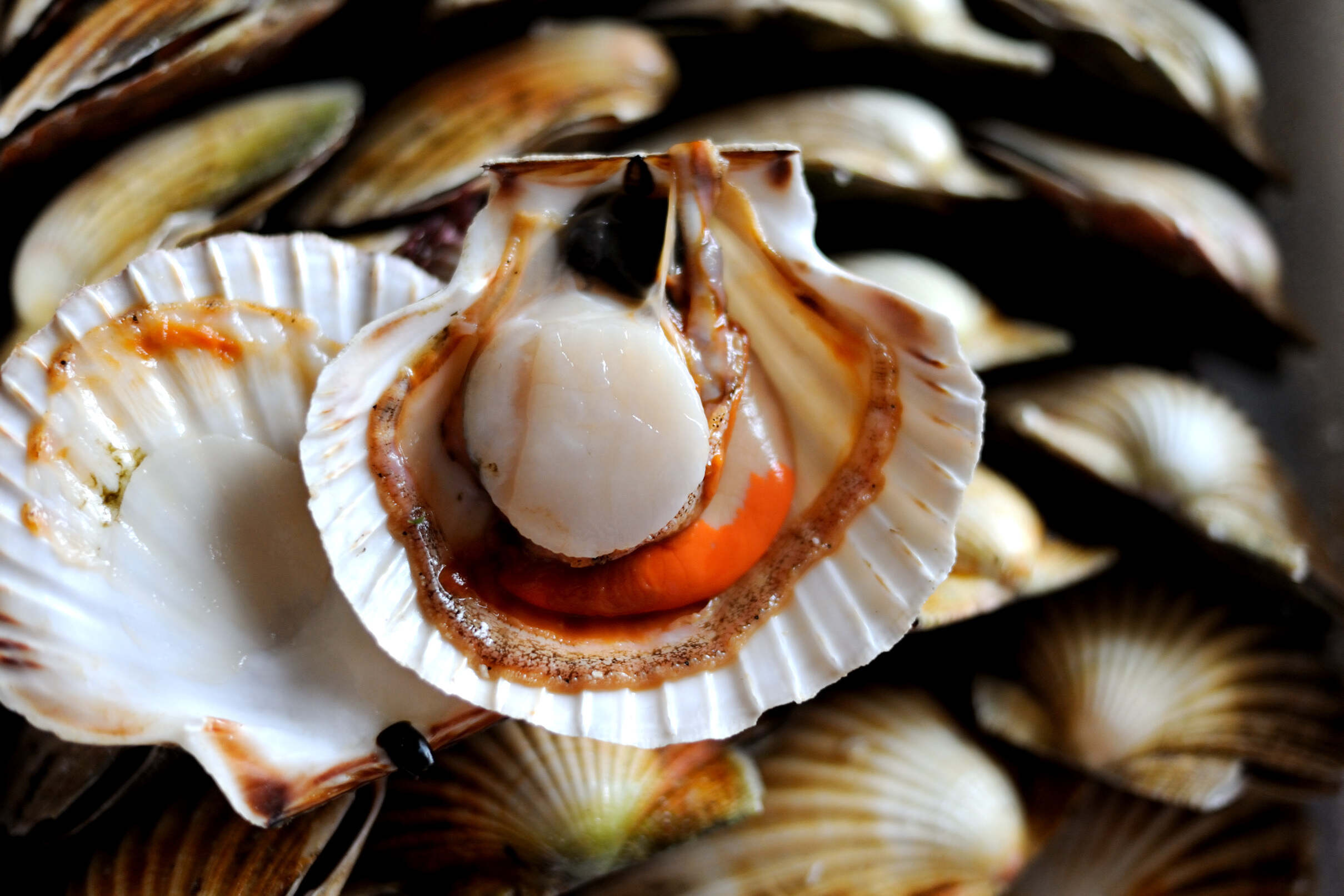
Scallops are fascinating creatures of the sea, known for their unique shells and delicious taste. But did you know that these marine mollusks have over 200 eyes? Scallops use these eyes to detect light and motion, helping them evade predators. They can swim by clapping their shells together, propelling themselves through the water. These bivalves are also filter feeders, meaning they clean the ocean by filtering plankton and other small particles from the water. Scallops have been a part of human cuisine for centuries, prized for their sweet, tender meat. Whether you're a seafood lover or just curious about marine life, there's so much to learn about these incredible creatures. Dive into these 27 facts about scallops to discover more about their biology, habitat, and role in our ecosystem.
What Are Scallops?
Scallops are fascinating marine creatures that belong to the family of mollusks. They are known for their unique shells and delicious taste. Let's dive into some interesting facts about these sea dwellers.
-
Scallops have two types of muscles: the adductor muscle, which they use to swim, and the smaller, less noticeable muscle that helps them open and close their shells.
-
Unlike many other bivalves, scallops can swim by clapping their shells together, propelling themselves through the water.
-
Scallops have up to 100 tiny blue eyes along the edge of their mantle, which help them detect light, dark, and motion.
-
They are filter feeders, meaning they consume plankton and other small particles from the water by filtering them through their gills.
-
Scallops can live up to 20 years, although most harvested for food are between two to three years old.
Scallop Habitat and Distribution
Scallops are found in oceans worldwide, from shallow coastal waters to deep sea environments. Their habitat and distribution are as diverse as their species.
-
Scallops prefer sandy or muddy sea floors where they can bury themselves partially for protection.
-
They are found in both warm tropical waters and cold polar regions, showcasing their adaptability.
-
The largest populations of scallops are found in the North Atlantic Ocean, particularly off the coasts of Canada and the northeastern United States.
-
Some species of scallops are also found in the Mediterranean Sea and around the coasts of Japan and China.
-
Scallops are often found in areas with strong currents, which help bring a steady supply of plankton for them to feed on.
Scallop Reproduction and Life Cycle
The life cycle of scallops is quite intriguing, involving several stages from larvae to adulthood. Their reproduction methods are equally fascinating.
-
Scallops are hermaphrodites, meaning they have both male and female reproductive organs.
-
They release eggs and sperm into the water column, where fertilization occurs externally.
-
After fertilization, scallop larvae float in the plankton for several weeks before settling to the ocean floor.
-
Once settled, they undergo metamorphosis, transforming from free-swimming larvae into juvenile scallops.
-
Juvenile scallops grow rapidly, reaching maturity within a year or two.
Scallops in Cuisine
Scallops are a popular seafood choice, known for their sweet, delicate flavor and tender texture. They are enjoyed in various culinary traditions around the world.
-
The adductor muscle, also known as the "scallop meat," is the part most commonly eaten.
-
Scallops can be prepared in numerous ways, including grilling, searing, baking, and even raw in dishes like ceviche.
-
In Japanese cuisine, scallops are often served as sashimi or sushi.
-
Scallops are a rich source of protein, vitamins, and minerals, making them a nutritious addition to any diet.
-
The roe, or coral, of the scallop is also edible and considered a delicacy in some cultures.
Environmental and Economic Impact
Scallops play a significant role in marine ecosystems and have a considerable economic impact on the fishing industry.
-
Scallop fishing is a major industry in many coastal communities, providing jobs and supporting local economies.
-
Overfishing and habitat destruction are significant threats to scallop populations, leading to efforts to manage and conserve these valuable resources.
-
Sustainable scallop farming, or aquaculture, is becoming increasingly popular as a way to meet demand without depleting wild populations.
-
Scallops contribute to the health of marine ecosystems by filtering water and providing habitat for other marine organisms.
-
Climate change and ocean acidification pose long-term threats to scallop populations, affecting their growth and survival.
Fun and Unusual Facts
Scallops have some quirky and lesser-known traits that make them even more interesting.
Scallops: Nature's Marvels
Scallops are more than just a seafood delight. Their unique eyes, which can number up to 200, allow them to detect predators with remarkable precision. These bivalves also have the fascinating ability to swim by clapping their shells together, a rare trait among shellfish. Scallops play a crucial role in marine ecosystems, filtering water and providing habitat for other species. Their distinctive shells have inspired art and architecture for centuries. Whether you're a seafood lover or a marine biology enthusiast, scallops offer a wealth of intriguing facts. Next time you enjoy a plate of scallops, remember the incredible journey these creatures have taken from the ocean floor to your table. Their story is a testament to the wonders of the natural world, blending beauty, function, and mystery in one small package.
Was this page helpful?
Our commitment to delivering trustworthy and engaging content is at the heart of what we do. Each fact on our site is contributed by real users like you, bringing a wealth of diverse insights and information. To ensure the highest standards of accuracy and reliability, our dedicated editors meticulously review each submission. This process guarantees that the facts we share are not only fascinating but also credible. Trust in our commitment to quality and authenticity as you explore and learn with us.
